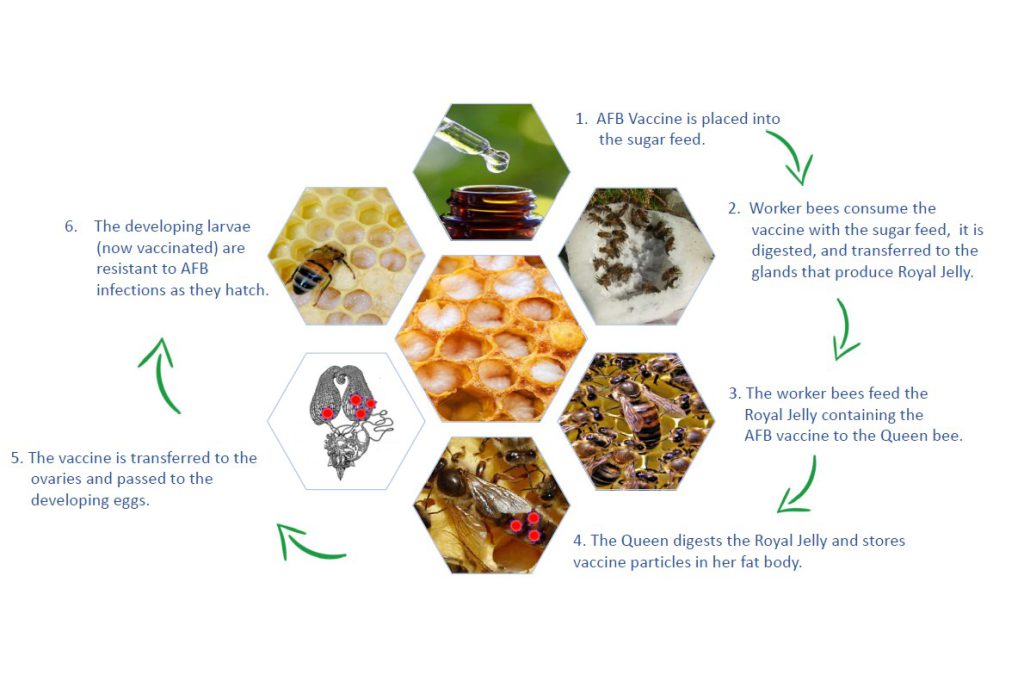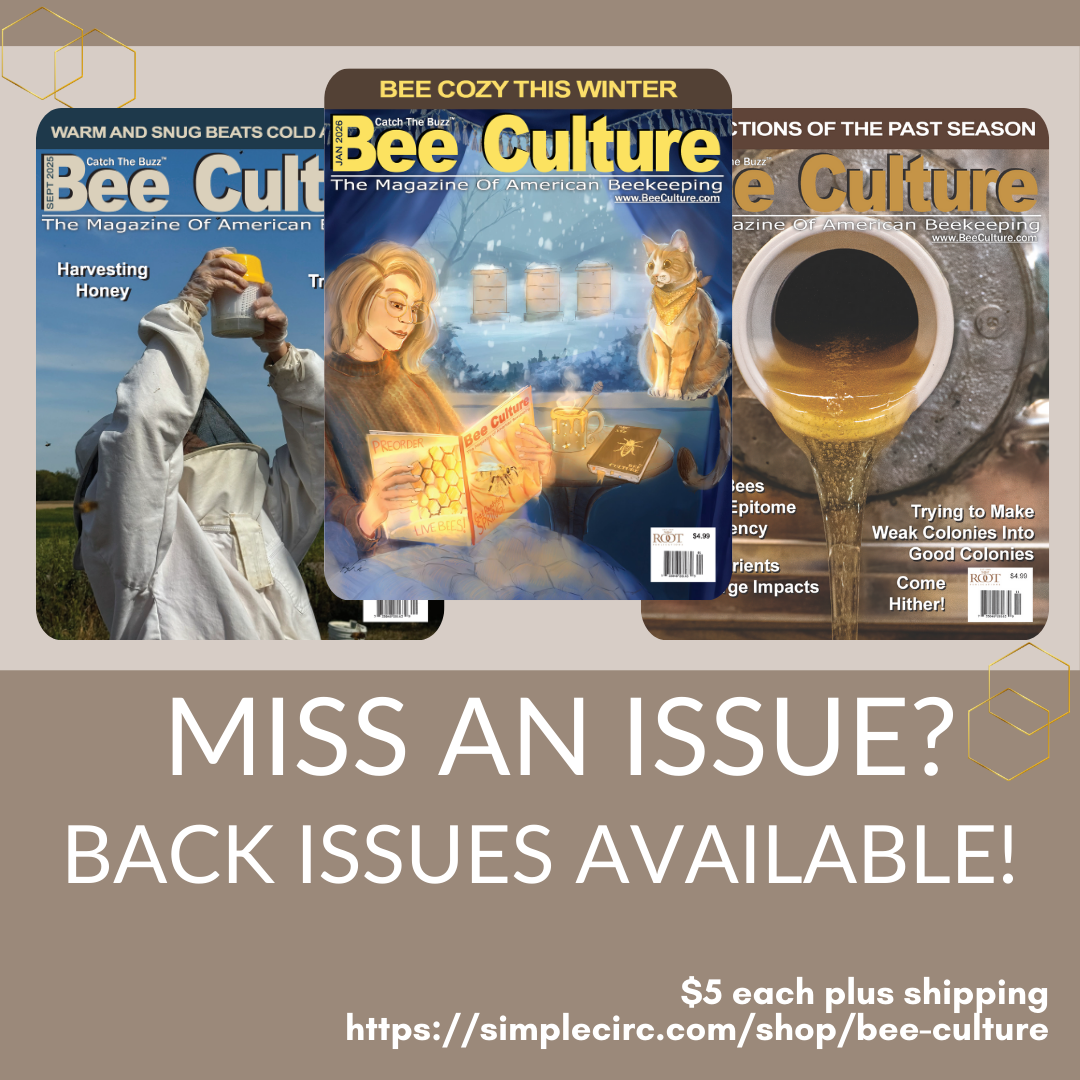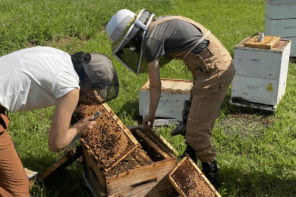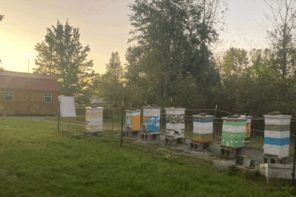Lessons From The Honey Bee
Dalial Freitak
With an ongoing pandemic, many of us are searching for answers on how to deal with such a unique and unnerving situation staring us in the face every day. Because of the nature of my work as a virologist, previously developing human vaccines and now as a honey bee virologist, I often compare humans to other organisms with respect to how they combat diseases and fend off pathogens. Bees have been around for much longer than humans; I consider them to be the more adept of the two with more experience navigating the natural world.
Modern humans evolved around 100,000 years ago and established societies roughly four to 10 thousand years ago. In contrast, honey bees evolved much earlier, around 100 million years ago, and established societies around 50 million years ago. During this time, honey bees faced an onslaught of challenges from the natural world, affording them the time to acquire an effective response to highly infectious microorganisms. Studying the long-acquired defense mechanisms of the honey bee may offer critical strategies for overcoming infectious diseases as a society.
In both human and honey bee species, defense mechanisms can be separated into two categories: social immunity (mounting anti-parasitic behaviors for the benefits of the group rather than the individual), and individual immunity (mounting an immune response to combat invading microorganisms within an organism).
Social immunity
In honey bees, social immunity is comprised of numerous and complex behaviors. Polyandry, where a single queen will mate with multiple drones, expands the genetic diversity within a colony. Task allocation minimizes pathogen transmission by reducing the contact between highly exposed individuals (e.g. foragers) and lesser exposed individuals (e.g. larvae, pupae, and nurse bees). Resin (propolis) is an antimicrobial agent. And allogrooming, reciprocal grooming by bees in the hive, removes parasites and pathogens. These, in combination with hygienic behavior (maintaining cleanliness and health), social fever (whereby many bees raise the temperature to kill bacterial invaders), and absconding behavior (where most of the bees leave the hive along with the queen) help to protect the honey bee.
Human behaviors, with respect to social immunity, can be equivocal to those found in honey bee society. For example, genetic diversity is an important factor in the survivorship of both bees and humans, although the mechanism generating diversity in humans is quite different. Research shows that high genetic diversity within a honey bee colony makes it more resistant to infectious disease1. In humans, genetic diversity is also correlated with improved overall health as well as the ability to fight diseases. A well-known example of this is the effect of inbreeding in a society where the resulting decreased genetic diversity was found to reduce fertility2.
Another example of similarities between bees and humans is the ability to self-medicate. Honey bees collect resin from trees (propolis) and harness its antibiotic properties for use in the hive. The honey bee gut pathogen Nosema ceranae is significantly less infectious to bees after consumption of propolis extract3. Humans further developed on this premise, using research to isolate and synthesize beneficial compounds for use in medications.
Other similarities are more obvious. For example, honey bee grooming is analogous to good hygiene practices in humans. The ability of honey bees to identify and clean infected/unhealthy larvae is similar to doctors detecting and preventing disease, and isolating infected individuals to prevent any further spread.
From a social point of view, the main components honey bees use to fight an epidemic are logical: (i) keep things clean; (ii) identify and isolate infected individuals away from healthy ones; and, perhaps less obvious, (iii) maintain a genetically diverse society.
Individual immunity
The insect and mammalian innate immune systems consist of both humoral and cellular responses. Both are activated by the presence of an intruder, as well as the metabolic molecules resulting from the invader’s replication inside the body, or from wounding.
The cellular response, as the name implies, utilizes cells to perform the defensive tasks. Some examples of this include: Encapsulation, the process whereby a pathogen is aggregated by several cells. These cells are called hemocytes in the case of insects and myeloid cells in mammals. And Phagocytosis, whereby specific hemocytes in insects and myeloid cells in mammals “swallow” the pathogen and destroy it. Insect hemocytes display many structural and functional similarities to human neutrophils (a myeloid cell).
The humoral response takes place in extracellular fluids secreted by special cells. It has this name because it involves substances found in the humors (body fluids). Many of the humoral responses in insects and mammals are similar); however, a number show distinct differences. For example, in mammals, melanization (skin pigment) plays a role in protection from the sun. In contrast, insect melanization acts as a defense mechanism in which the phenyl oxidase (proPO) system is activated upon pathogen invasion. Human and insect antimicrobial peptides (AMPs) share distinct structural and functional similarities. Insects produce the majority of their AMPs from the fat body while mammals rely on production locally at the site of infection by epithelial/mucosal cells.
Perhaps the most provocative part of this story is the realization that, despite there being many similarities between insect and mammalian immune systems, there was thought to be one exception. Mammals possess an adaptive immune system. The adaptive immune system enables a response to a specific pathogen. It relies upon the presence of a host lymphocyte with specific receptors that recognize the precise pathogenic antigen. The adaptive immune system has the ability to remember previous pathogen attacks, resulting in a more effective immune response to subsequent infection. The ability to train the immune system to quickly mount an attack when faced with a previously encountered threat is the basis for one of the biggest revolutions in human medicine: the vaccine.
Do insects lack an adaptive immune system? This is a question that has been around for decades. Social insects, including the honey bee, Apis mellifera, display immunological priming. Prior exposure to a pathogen enhances survival to subsequent attacks as a result of increased humoral and cellular responses.
Trans-generational immune priming (TGIP) in honey bees is a remarkable finding. It demonstrates the existence of a system able to acquire and transmit some level of protection to the offspring. The remaining question is how. What are the molecular mechanisms behind such an intriguing defense system? And more importantly, what can we learn from this?
In 2015, researchers from Finland began elucidating this puzzle by showing that Vitellogenin, a nutritious lipoprotein synthesized by the fat body, plays a role in TGIP4. Vitellogenin has several functions in the honey bee body, including a role in the recognition of pathogens. It has been shown to be a transporter of small fragments of processed pathogens into the eggs of the honey bees, possibly to confer resistance to future pathogenic attacks.
It is true that insects lack antibodies, the carriers of immunological memory that human mothers transfer to their offspring; however, it would not be surprising if honey bees could have alternative methods to pass along the same benefits to their young using similar techniques. The advancement of such a discovery could bring the first honey bee vaccine to the market, disproving one of the assumed fundamental differences between the immune system of humans and honey bees. I am very excited to see what new discoveries will bring to the industry to help honey bees and beekeepers alike.

References
1Seeley Thomas D and Tarpy David R 2007 “Queen promiscuity lowers disease within honeybee colonies.” Proc. R. Soc. B.27467–72.
2Ober, Carole, Terry Hyslop, and Walter W. Hauck. “Inbreeding Effects on Fertility in Humans: Evidence for Reproductive Compensation.” The American Journal of Human Genetics 64, no. 1 (January 1999): 225–31.
3Burnham, Andre J., Emily De Jong, Jayre A. Jones, and Herman K. Lehman. “North American Propolis Extracts From Upstate New York Decrease Nosema Ceranae (Microsporidia) Spore Levels in Honey Bees (Apis Mellifera).” Frontiers in Microbiology 11 (July 22, 2020): 1719.
4Salmela, Heli, Gro V. Amdam, and Dalial Freitak. “Transfer of Immunity from Mother to Offspring Is Mediated via Egg-Yolk Protein Vitellogenin.” Edited by David S. Schneider. PLOS Pathogens 11, no. 7 (July 31, 2015): e1005015.









